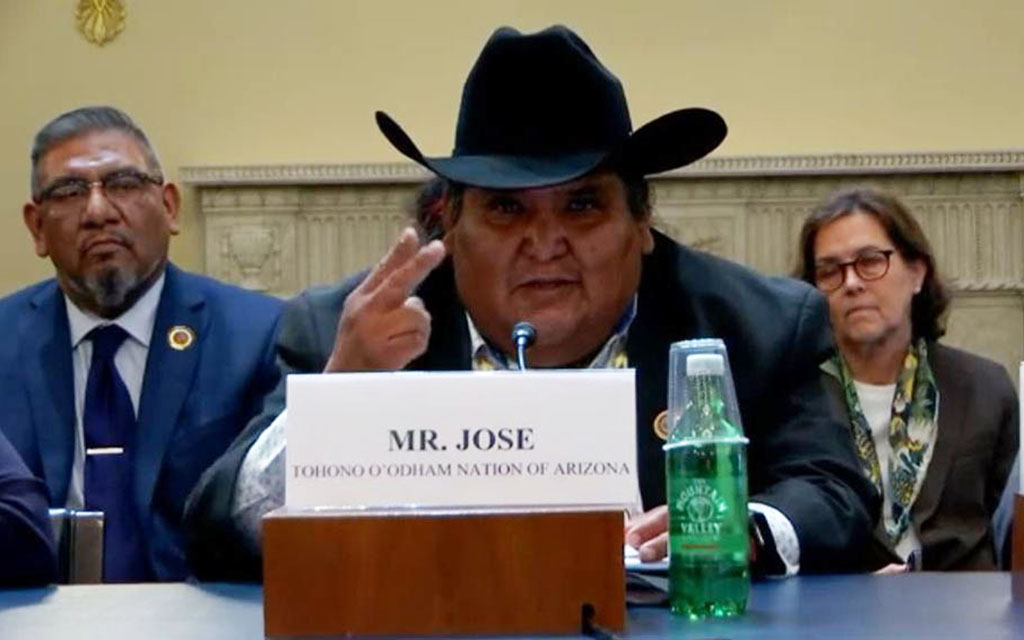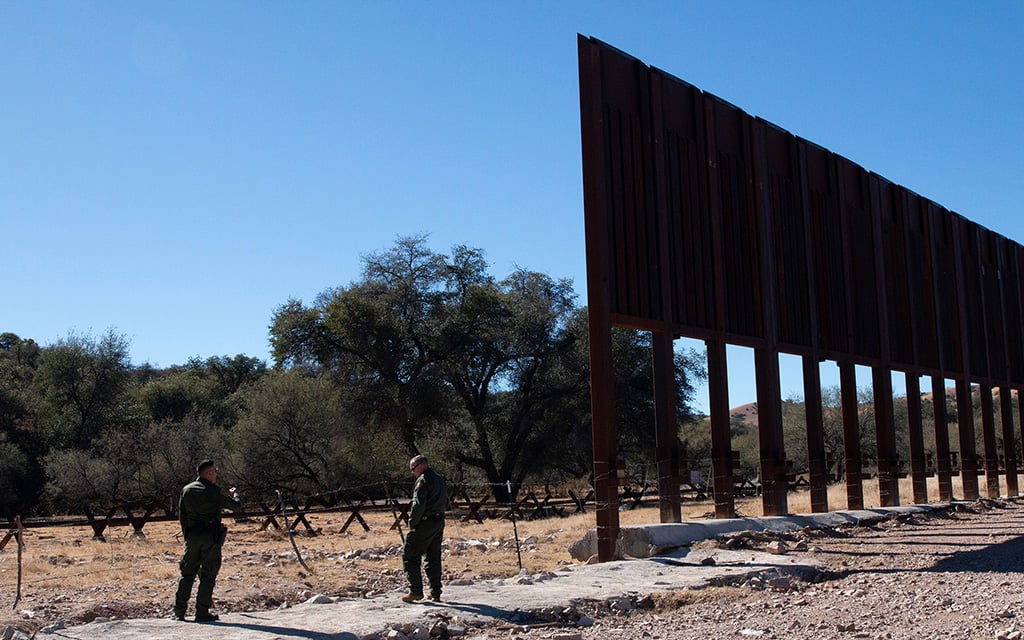
Migrant encounters at the southern border hit a record 2.47 million in fiscal 2023, which ended last month, and the Tucson sector was the busiest of all parts of the border for the last three months of the year. Here, a Customs and Border Protection agent prepares migrants for a repatriation transfer at the Hidalgo, Texas, Port of Entry in June. (Photo by Jaime Rodriguez Sr./Customs and Border Protection)
WASHINGTON – A record 2.47 million migrants were stopped at the southern border in fiscal 2023, with the Tucson sector of the border leading the rest of the nation for the third straight month.
New numbers from Customs and Border Protection show that migrant encounters in the Tucson sector rose from 48,754 in August to 51,001 in September, part of an overall increase from 232,963 to 269,735 along the entire southern border in the same period.
For the year, the Tucson sector, which includes most of the Arizona border, recorded 373,625 migrant encounters, third overall behind the El Paso and Del Rio sectors in Texas, which one analyst called “quite odd.”
“There’s just been this big jump in Mexican family arrival,” said Colleen Putzel, an analyst at the Migration Policy Institute. That “has kind of propelled the Tucson sector into one of the top three sectors for the year and then … the top sector in the last couple of months.”
Families stopped at the border continued to a three-year climb, according to CBP. The number of family members rose from 482,962 in fiscal 2022 to 621,311 in fiscal 2023, while the number of single adults encountered was falling, from 1.6 million to 1.3 million.
In the Tucson and Yuma sectors, families made up an even larger share when compared to single adults, at 60% and 55%, respectively.
Encounters have been falling in Yuma in recent months, with the sector recording 174,201 encounters for the fiscal year, sixth of the nine sectors of the border.
Putzel said one possible reason for the increase in family encounters is that CBP is not currently detaining families but is trying to “quickly process and release families because children are a vulnerable population.”
“Statistically speaking, your chances as coming as a family are probably higher to be released into the U.S.,” she said.
Ira Mehlman, the spokesperson for the Federation for American Immigration Reform, said the fact that families are showing up in greater numbers points up the flaw in the Biden administration’s border policy.
“As long as this administration maintains the policies that say, ‘If you come to the country illegally, there’s a high probability that you’re going to be released if you come with kids, or if you come as an unaccompanied minor,’ … we’re going to keep seeing this,” Mehlman said.
He said the increases in the Tucson sector reflect “what’s happening across the border from, you know, the Pacific to the Gulf of Mexico if the numbers are up everywhere.”
“Unless the administration acts decisively to change the policies that created this, Tucson can expect to see many, many more people come,” Mehlman said.
But Ricky Garza, an attorney at Southern Border Communities Coalition, said that while the numbers are important to note, it is more important to consider the the human lives those numbers reflect.
“Our response really should start with dignity and not about, you know, any latest trends and what number of people there are,” Garza said. “Everyone is an individual and everyone deserves to be treated with respect.”
Garza said that critics who say migrants need to follow legal pathways to come to the U.S. don’t understand the many challenges migrants face trying to abide by those rules.
“In reality … policy has changed dozens of different times and I think that what shouldn’t change is our respect for dignity and human rights,” he said.
Putzel said there are a number of different factors driving migrants to the border, including migration within and emigration from Mexico.
“We also have to consider sort of an increased movement within Mexico of Mexican nationals because of violence or crime … particularly in Michoacan, (and) Guerrero – some of these states are experiencing really high levels of violence and causing sort of this internal movement of Mexicans,” she said.
The 579,146 Mexicans encountered by border officials accounted for 28.3% of the total for fiscal 2023. Mexicans made up a vastly larger share of migrants in the Tucson sector, where they accounted for 49.6% of all encounters.
The largest group for the entire border was “other,” which includes countries outside of Mexico and Central America. There were just over 1 million migrants from other countries in fiscal 2023, according to CBP.


